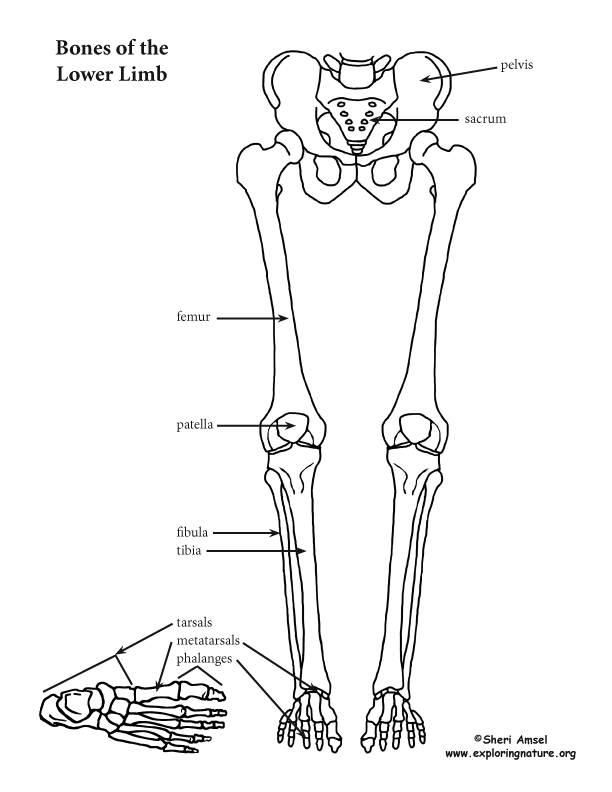

The lower limb includes the:
• femur (thigh)
• tibia (shinbone)
• fibula (leg)
• bones of the foot: tarsals (ankle), metatarsals (foot) and phalanges (toes)
The kneecap (patella) sits in front of the knee joint, inside a muscle tendon. The femur is the largest bone in the body and makes up about 1/4th of a person's height. It forms a ball and socket joint at the hip with the pelvis and a hinge joint at the knee with the tibia.
The hip joint is very important for leg movement and is supported by strong muscles and ligaments. Though it is a ball and socket joint like the shoulder, it is more stable and less moveable than that joint. The knee, a hinge joint, has less flexibility than the hip but is more stable. However, because the knee carries the bulk of the body's weight, it is often injured. The entire weight of the body sits on the foot. The foot acts as a lever to move the body forward when we walk or run.
*Label the Bones of the Lower Limb in the PDF below.
LS1.A: Structure and Function
• All living things are made up of cells, which is the smallest unit that can be said to be alive. An organism may consist of one single cell (unicellular) or many different numbers and types of cells (multicellular). (MS-LS1-1)
• Within cells, special structures are responsible for particular functions, and the cell membrane forms the boundary that controls what enters and leaves the cell. (MS-LS1-2)
• In multicellular organisms, the body is a system of multiple interacting subsystems. These subsystems are groups of cells that work together to form tissues and organs that are specialized for particular body functions. (MS-LS1-3)
